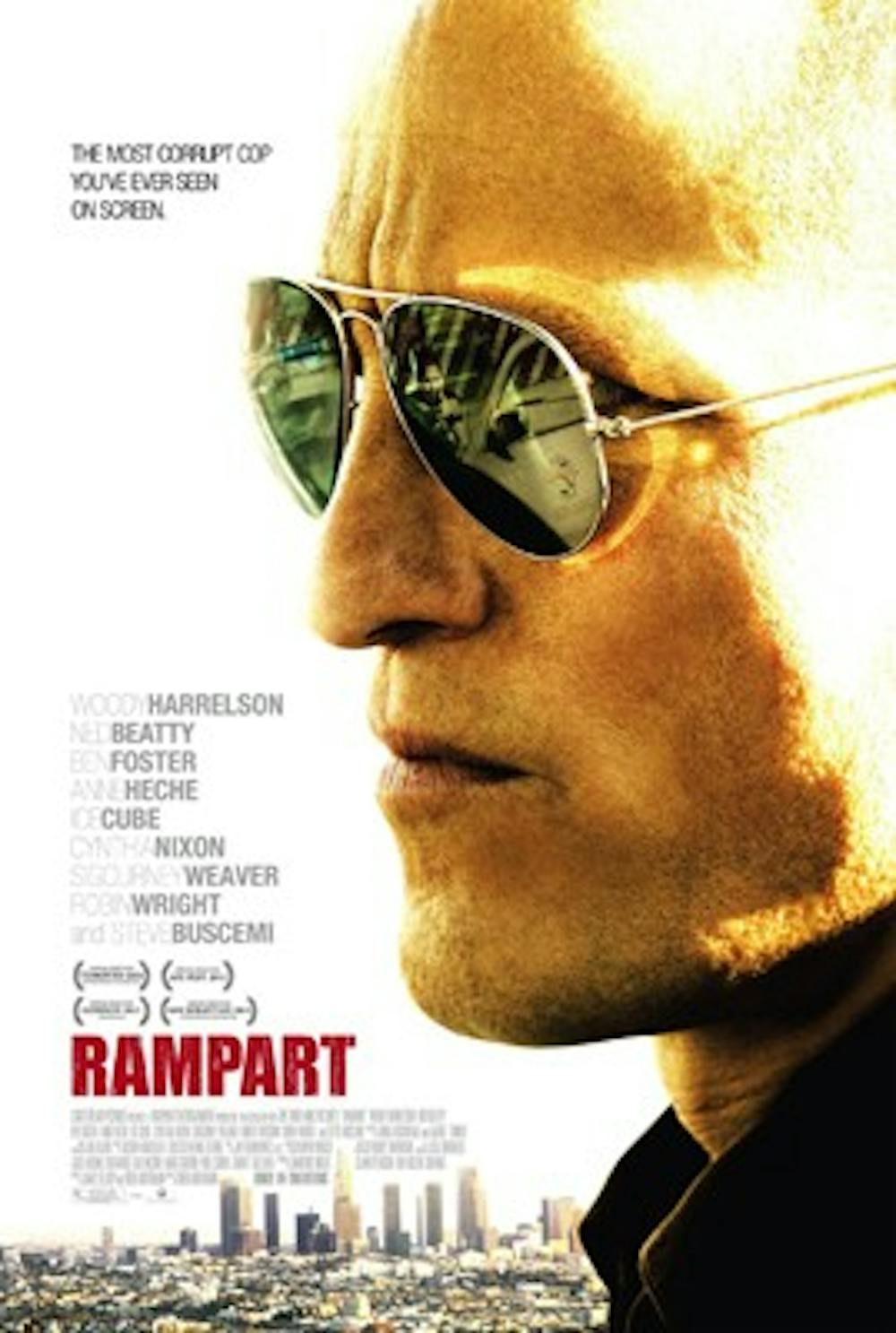Released March 2, 2012
Starring: Woody Harrelson
Pitchforks: 3.5/5
Over the years, countless movies have been made about straight-arrow police officers trying to weed out departments overrun with bad cops. Surprisingly, very few have been made about the crooked cops themselves.
“Rampart” is the latest in the police drama genre, but the story has a twist.
The film stars Woody Harrelson as Dave Brown, a corrupt Los Angeles cop whose years of misconduct have finally been brought into question after he is filmed beating a suspect.
When done right, films about police culture can make intriguing character studies of powerful people morally run amok.
Such films that have dealt with this subject matter include the original and the remake of “Bad Lieutenant,” “Training Day” and “Harsh Times.”
Much of the film follows what Brown does to try to stay ahead of the years of hate and mistreatment he has committed.
Unfortunately, it follows many of the expected rhythms one would anticipate from a story like this. It’s not as unpredictable as “Bad Lieutenant,” which doesn’t pull any punches with its main character during its more unsettling and shocking moments.
Despite being written by the prolific crime novelist James Ellroy, and the film’s director Oren Moverman, “Rampart” takes few risks on the police side of things.
The film contains adequate supporting performances from veteran actors such as Ned Beatty, Sigourney Weaver and Steve Buscemi, yet there isn’t much for them to do aside from repeatedly reminding Brown of what a bad person he is, which becomes repetitious and droning.
Viewed within the context of vigilantism on film, Harrelson brings out the only interesting twist to the plot. Dave Brown seems to be a product of “Dirty Harry” — he’s willing to shoot, and then ask questions, but it never occurs to him the effect his violence will have. It’s debatable if this idea started on the page or not.
As a character, Dave Brown likes to be in control, and when he’s not, he either sulks or lashes out. Harrelson’s performance captures the qualities of a man who has alienated just about everyone in his life and can’t figure out why.
Whenever the film shifts to Brown’s family life, Harrelson and the movie become more compelling than any of the scenes of him on the job. Neither the people who know him professionally nor personally want anything to do with him.
These are the moments in “Rampart” that resonate with an audience. These are the scenes where Brown is best understood. Behind the masculinity and rebel veneer lies an incredibly shallow and unsatisfied man. The film needs more of this, and less of the same procedural scenes that have been in countless other cop movies. Without the badge, Brown is just another pathetic deadbeat, and to the film’s credit, the storyline portrays this — just not enough.
When the film examines Brown on a personal level, “Rampart” tells a story with dimension and dynamic. But when it covers him on the job, there is little to no spark.
Reach the reporter at tccoste@asu.edu
Click here to subscribe to the daily State Press newsletter.





